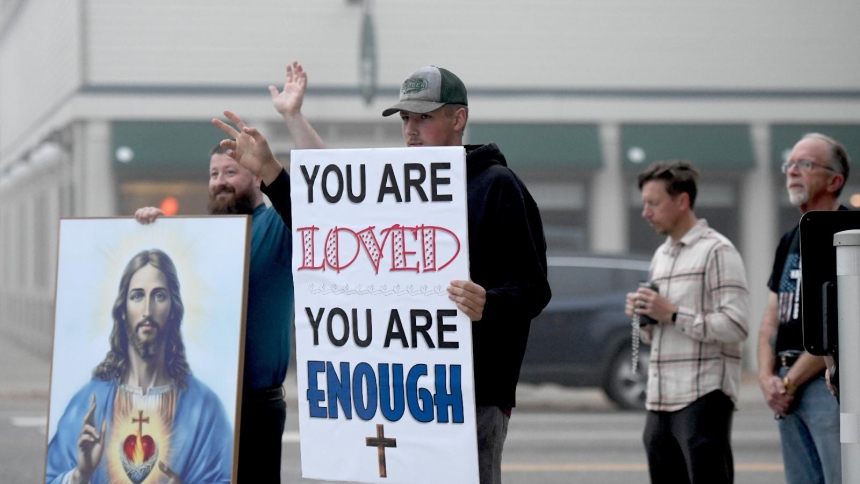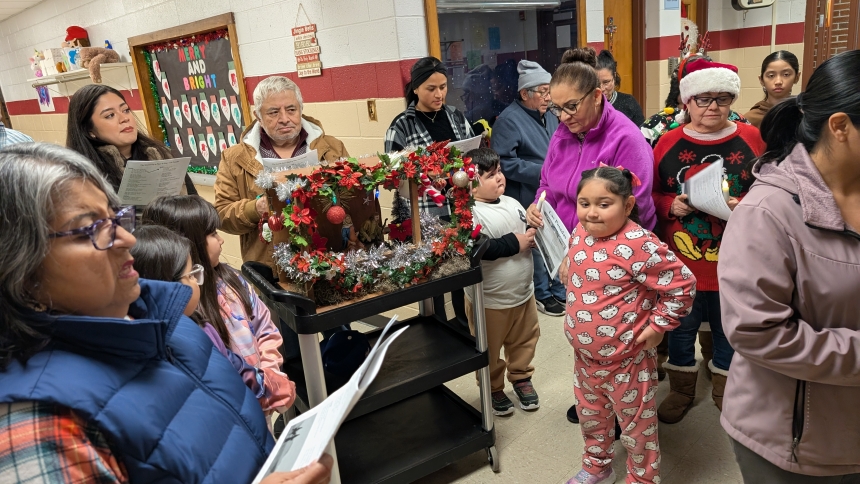
As published in the Northwest Indiana Catholic on February 17, 2019
This past Monday was the feast of Our Lady of Lourdes, honoring the apparitions of the Blessed Virgin Mary to St. Bernadette and the ongoing healings that have taken place at this beautiful French shrine, nestled in the Pyrenees, since 1858.
Mary told Bernadette to dig in the ground near a grotto; she did so and discovered a spring of water, which has served as the vehicle for God’s blessings, healings and miracles ever since. Every year, millions of people come to Lourdes, seeking strength, peace and renewal in body, mind, heart and spirit.
One way to understand the Christ event is through the lens of restoration and transformation. Jesus came to us in his healing power to undo the destructive forces of sin and death, to restore everything in us that is fractured, broken, wounded, sick, sinful and dead. Christ ultimately accomplishes this remarkable work of salvation through his death and resurrection, but dedicates a significant amount of his time and energy to healing and forgiving others before he embraces the Paschal Mystery.
The Gospels are joyful narratives, filled with hope and light, as Jesus heals the blind, the deaf, the lame, the possessed, the sinful, and even raises the dead. We see him putting the broken pieces of humanity back together as the Father originally created us, restoring the divine image of beauty, truth and goodness in every human soul.
I imagine Jesus as a consummate restorer of art. Picture a Leonardo da Vinci masterpiece, obscured by dirt and age, disfigured by vandals who slashed it and threw paint on it, almost unrecognizable in its damaged state. Along comes an art expert who knows every detail of how the painting should look and possesses the abilities to restore it.
He will first carefully study the damage, observing the cuts, the dirt, the splashed paint, the overall wreckage. Confidently proclaiming, “I can do this,” he will gently set to work, undoing and healing everything that does not belong there, whatever does not fit into the original splendor of the masterpiece.
By sewing shredded pieces back together, and tenderly washing away the dirt and damage, the restorer is so adept at his craft that the transformed painting actually looks better than it did originally. His learned, persistent, skilled and gentle eyes and fingers have brought this work of art to life, radiant in its transformed integrity.
Is that not what Jesus does for us?
Through the grace of the sacraments, the power of prayer, the surrender of conversion, the presence of the Holy Spirit, the Lord is acting in us to forgive, heal, bless and restore everything within us that is wounded and lifeless because of sin and death. If we allow him, the Master will set to work on us, bringing us back to life and peace.
This healing power of Christ I have experienced in my own life and those of everyone I know. I have felt it when celebrating the sacrament of the anointing of the sick, seen it in the eyes of people I have counseled through illness, suffering and addiction, knew the Master to be at work in the joy of restored relationships and forgiveness offered and accepted, rejoiced in the grace of the sacrament of reconciliation thousands of times throughout my priesthood.
We live in a world so fractured and broken. The violence and hatred in our culture, the daily shootings and daily abortions, the political gridlock in our government, the millions of people fleeing poverty and murder all over the globe, the endless wars - all of this shouts of a human race in radical need of redemption. In our individual lives, the folks diagnosed with cancer, the young people who suffer drug addiction and suicide, the marriages and families broken by conflict and lack of forgiveness, the painful memories of abuse and neglect, the people who live completely alone in the world - all of this cries out for the healing power of Jesus Christ.
Right before Christmas, I joined the Missionaries of Charity and a group of volunteers in a visit to a local nursing home in Gary. We sang traditional hymns, passed out food and gifts and went to the rooms of those who did not join us in the dining room. The overwhelming loneliness of many residents I met tore my heart open.
Many said they had no one in this world - not a single relative, not one friend who visits or cares about them. They abide in darkened isolation, feeling unknown and unloved. If they died tonight, no one would seemingly mourn their passing. Certainly, the employees there do their best to serve and love the residents, but everyone needs personal relationships of love, tenderness and concern in order to know the mercy of the Lord Jesus.
That is where we come in. Jesus calls us to be faithful disciples of his healing ministry, doing our best to love the broken, befriend the lonely, touch the wounded and bring peace to a weary soul. This redeeming mission has always been at the heart of the Church’s life and energy, both in institutions and individual relationships.
Right before I was ordained a priest, a wise old nun told me to listen to every person I would ever meet with a heart of compassion because everyone carries within them a “secret sorrow” as she called it. They are looking for someone with love and concern to whom they can show the wounds of their secret sorrow and thus find healing.
Are you that person? Am I that person? As Mother Teresa said, do we dare to touch the broken body of Christ in the distressing disguise of the poor and suffering? As we both receive and share the healing power of the Lord, we help him to heal the world. What mission could bear greater significance?
+ Donald J. Hying



